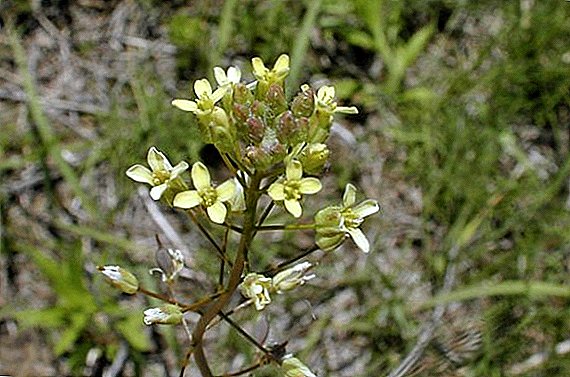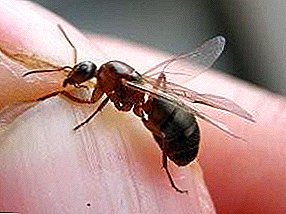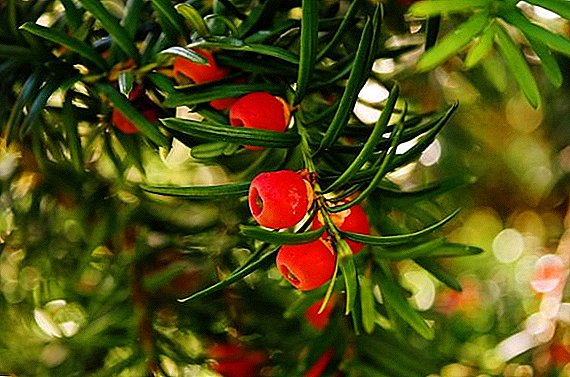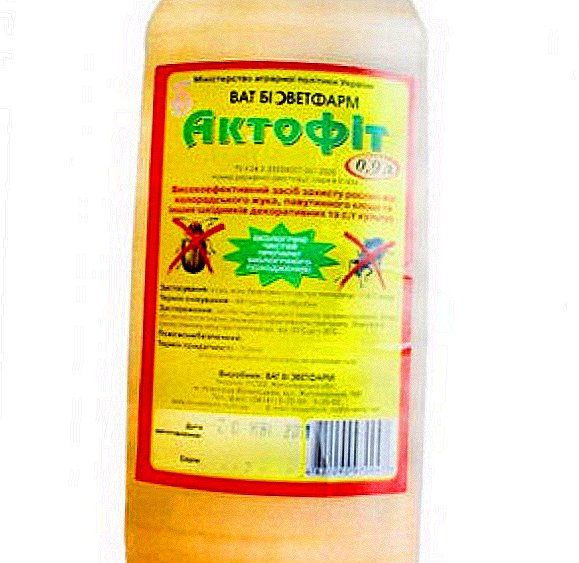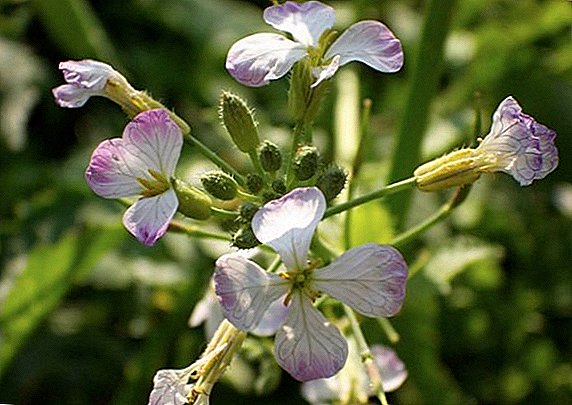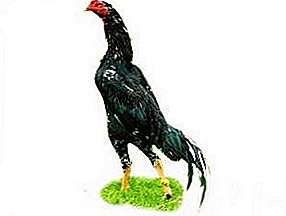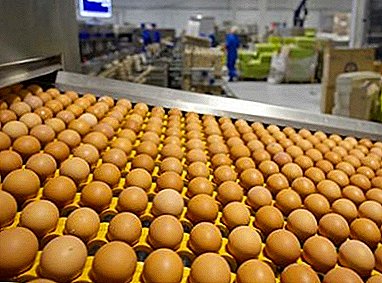
Several times a year, farmers increase the number of livestock. Unlike chickens, ducks do not always hatch their eggs themselves, so poultry farmers often resort to using an incubator to hatch young (for information on how to make an incubator with your own hands, read here).
Incubation is an artificial process for obtaining chicks from eggs, which takes place in a special incubation cabinet. Observing conditions close to natural (maintaining the correct level of humidity, temperature and ventilation) receive a large percentage of live, strong and fully developed ducklings.
Features incubation of duck eggs
Duck eggs are quite high-calorie, large, their weight on average reaches 90-95gr, which is almost 2 times more chicken. The shell is dense, the color varies from white to greenish.
Features include:
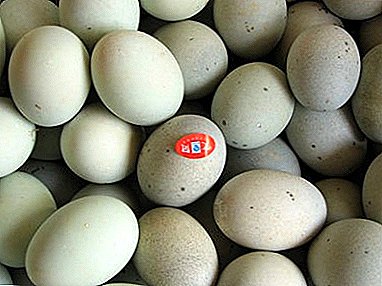 extended incubation period for different breeds;
extended incubation period for different breeds;- due to the density of the shell, the temperature in the incubator is set to 38 degrees;
- in order to avoid overheating and death of the embryo, duck eggs need enhanced ventilation.
To exclude strong contamination and subsequent infection of eggs, poultry farmers are advised to monitor the cleanliness of the litter in the boxes.
Clean straw or sawdust is laid in the evening and eggs are collected in the morning. In the warm season, they are harvested twice a day; during a cold snap, the boxes are checked every hour so that the eggs do not have time to cool.
Selection and storage
Proper selection is a guarantee of successful breeding ducklings. Duck eggs for incubation should have the following characteristics.:
- The entire incubation material has almost the same weight, the correct form.
- The shell is flat, clean, without cracks, chips and deformations.
- Permissible storage - a week from the moment of laying, in a room with a temperature of 10 - 12 degrees.
- Eggs must be fertilized (screening unfertilized eggs, checking each with an ovoscope). When radiography will be visible blood grid.
Store duck eggs in boxes with sawdust, in a position slightly tilted to the side or pointed end down. It is not recommended to fold the eggs on each other, in order to avoid cracks. During storage, the eggs are inverted several times a day.
Watch the video about collecting and storing duck eggs for incubation:
Preparing to bookmark
 Before laying eggs in the incubator, they are cleaned and disinfected.. Duck eggs are often stained with droppings, this gives rise to the growth of bacteria.
Before laying eggs in the incubator, they are cleaned and disinfected.. Duck eggs are often stained with droppings, this gives rise to the growth of bacteria.
Through the pores of the shell microorganisms penetrate into the egg and cause infection and death of the embryo.
To do this, they are cleaned. Mechanical cleaning is dangerous, it can damage the shell.
The following procedures should be used to clean the eggs.:
- each egg is placed in a warm antiseptic solution (a light solution of manganese or a cooled solution of furatsilina, at the rate of 1 ton per 100 ml of boiling water);
- gently wipe off the plaque with gentle movements, disinfect the surface in parallel.
Watch the video about preparing duck eggs for laying in the incubator:
Stages of embryo development
Inside the egg, the embryo goes through 4 stages of development.. For each stage, it is necessary to know what the temperature in the incubator is, because the result of incubation depends on the temperature and humidity indicators. The slightest failure to comply with the rules can lead to the death of the embryo at a certain stage, or to the hatching of weak, unviable young. How many days are the duck embryos in the incubator and how is the development going on?
Stage of development:
- During the first week (1 period) in the incubator at home at the embryo, organs are formed, and cardiac activity begins. At this stage, the temperature is maintained at 38 degrees, humidity 70%.
- From the 8th day from the beginning of the bookmark (period 2) the formation of the skeleton of a bird. At this stage, enhanced gas exchange begins, ventilation is more frequent, the temperature is reduced to 37.6 - 37.8 degrees.
- From the 18th day of incubation (period 3) humidity is reduced to 60%. The temperature is at the same level. The duckling embryo occupies 2/3 of the space.
- Time of appearance of ducklings (4 period). To help little ducklings pierce a dense shell, it is necessary to raise the humidity to the level of 85 - 90%, the temperature is lowered to 37.5 degrees.
All about incubators
For home and industrial use there are incubator cabinets of various capacities (35 - 150 pieces), with manual, mechanical and automatic turning of eggs, temperature and humidity controllers. Such models such as the "hen" and "IPH-5" are considered to be the simplest incubators for duck eggs, with some features:
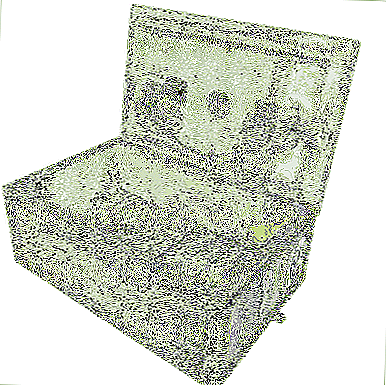 "Mother hen"places up to 36 eggs. It is a foam case, removable trays are located inside. Eggs for heating eggs are at the bottom. The humidity level is maintained by means of baths placed inside which water is poured.
"Mother hen"places up to 36 eggs. It is a foam case, removable trays are located inside. Eggs for heating eggs are at the bottom. The humidity level is maintained by means of baths placed inside which water is poured.Ventilation is through holes in the bottom and top of the case. It does not have automatic egg rotation, they are carried out manually.
 "Mother hen 1"- a more modernized model with a capacity of 50 eggs. The temperature is maintained by a spiral heater.
"Mother hen 1"- a more modernized model with a capacity of 50 eggs. The temperature is maintained by a spiral heater.Ventilation is carried out using a fan. Egg turns occur automatically.
 "IPH - 5"- an easy-to-use model, is a camera inside which trays are placed. The model has a temperature sensor, a rotator, water baths, a fan and a heater. Subsequent models contain up to 120 eggs.
"IPH - 5"- an easy-to-use model, is a camera inside which trays are placed. The model has a temperature sensor, a rotator, water baths, a fan and a heater. Subsequent models contain up to 120 eggs.The average incubation period for duck eggs is 26 to 28 days.
Mode
Artificial breeding of wild ducks differs from breeding of poultry by objectives and further mode of maintenance, for example, for mallard ducks. Breeding ducks, poultry houses adhere to the goal of obtaining various products when breeding wild ducks involves the release of young animals into nature.
Main steps:
- In the trays of eggs the mallards are laid vertically, with the pointed end down.
- Coups carried out every 2 hours.
- In the first period the temperature is set at 37.6 - 37.8 degrees, the humidity is 60%.
- During the incubation periodically airing is carried out to cool the eggs.
- The schedule of breeding young animals in an incubator is up to 28 days. Eggs are kept in the incubation cabinet for 24 days, then they are placed in the outlets, where they maintain the temperature in the incubator for germs of 37 degrees.
- During the incubation, eggs must surely appear for 8-13-24 days, determine the development of embryos.
Table mode and temperature of incubation of duck eggs at home:
| period | Dates, days | temperature | % humidity | Turns, the number of times per day | Egg cooling |
| 1 | 1-7 | 38,0-38,2 | 70 | 4 | not |
| 2 | 8-14 | 37,8 | 60 | 4-6 | not |
| 3 | 15-25 | 37,8 | 60 | 4-6 | 2 times a day for 15-20min |
| 4 | 26-28 | 37,5 | 85-90 | not | not |
Step-by-step instruction of the incubation process at home:
 Collection of incubation material.
Collection of incubation material.- How many days are in the incubator and displayed? Storing eggs for 5-7 days at a temperature of 10-12 degrees, turn the eggs several times a day.
- Checking the presence of germ germ germ (scanning each special device - an ovoskop).
- Transfer 6 day eggs to the room to heat them to 25 degrees.
- Cleaning and disinfecting eggs before incubation.
- Installation of duck eggs in an incubation cabinet, in trays, after adjusting the temperature for the next 7 days to 38 degrees and humidity at 70%. Turn the eggs every 2 hours.
- From 8 to 14 days the temperature is reduced to 37.8 degrees, humidity 60%. The eggs are rotated every 4 hours. Conduct ovoskopirovaniya.
- On the 15th day they start to air the incubator 2 times a day for 20 minutes, this produces gas exchange and cools the eggs. Temperature and humidity do not change. Turn the eggs every 4 hours. On the 24th day of the examination with an ovoscope
- In 2 periods, from 26 days, the temperature is reduced to 37.5 degrees, the humidity is increased to 90% and the peck of the shell is expected.
The most common mistakes
During the incubation of eggs, the slightest mistake can lead to negative consequences that affect the health of future young animals.
The most important mistakes are considered:
- overheating of eggs;
- small number of turns;
- improper humidity, dry air inside the incubator;
- rare airing.
IMPORTANT: Any disturbed incubation condition can cause embryo death at any stage of development.
The first actions after the birth
After the appearance of the ducklings, a thorough inspection of the livestock is carried out for their viability: the ducklings, well-standing, with uniform good plumage and without traces of an umbilical cord, are selected. The eyes are mobile, the wings fit snugly to the body. Sluggish individuals are rejected.
- Indoot eggs;
- turkey eggs;
- peacock eggs;
- Guinea fowl eggs;
- pheasant eggs;
- goose eggs;
- ostrich eggs;
- quail eggs;
- musk duck eggs.
Conclusion
Adhering to the instructions, to bring new stock of ducks is not difficult. Novice farmers often begin to master the incubator on duck eggs, then switching to breeding other birds. Given the characteristics of incubating duck eggs in compliance with all the conditions and recommendations, even a novice will be able to easily replenish or update the population of this popular breeding bird.


 extended incubation period for different breeds;
extended incubation period for different breeds; "Mother hen"places up to 36 eggs. It is a foam case, removable trays are located inside. Eggs for heating eggs are at the bottom. The humidity level is maintained by means of baths placed inside which water is poured.
"Mother hen"places up to 36 eggs. It is a foam case, removable trays are located inside. Eggs for heating eggs are at the bottom. The humidity level is maintained by means of baths placed inside which water is poured. "Mother hen 1"- a more modernized model with a capacity of 50 eggs. The temperature is maintained by a spiral heater.
"Mother hen 1"- a more modernized model with a capacity of 50 eggs. The temperature is maintained by a spiral heater. "IPH - 5"- an easy-to-use model, is a camera inside which trays are placed. The model has a temperature sensor, a rotator, water baths, a fan and a heater. Subsequent models contain up to 120 eggs.
"IPH - 5"- an easy-to-use model, is a camera inside which trays are placed. The model has a temperature sensor, a rotator, water baths, a fan and a heater. Subsequent models contain up to 120 eggs. Collection of incubation material.
Collection of incubation material.